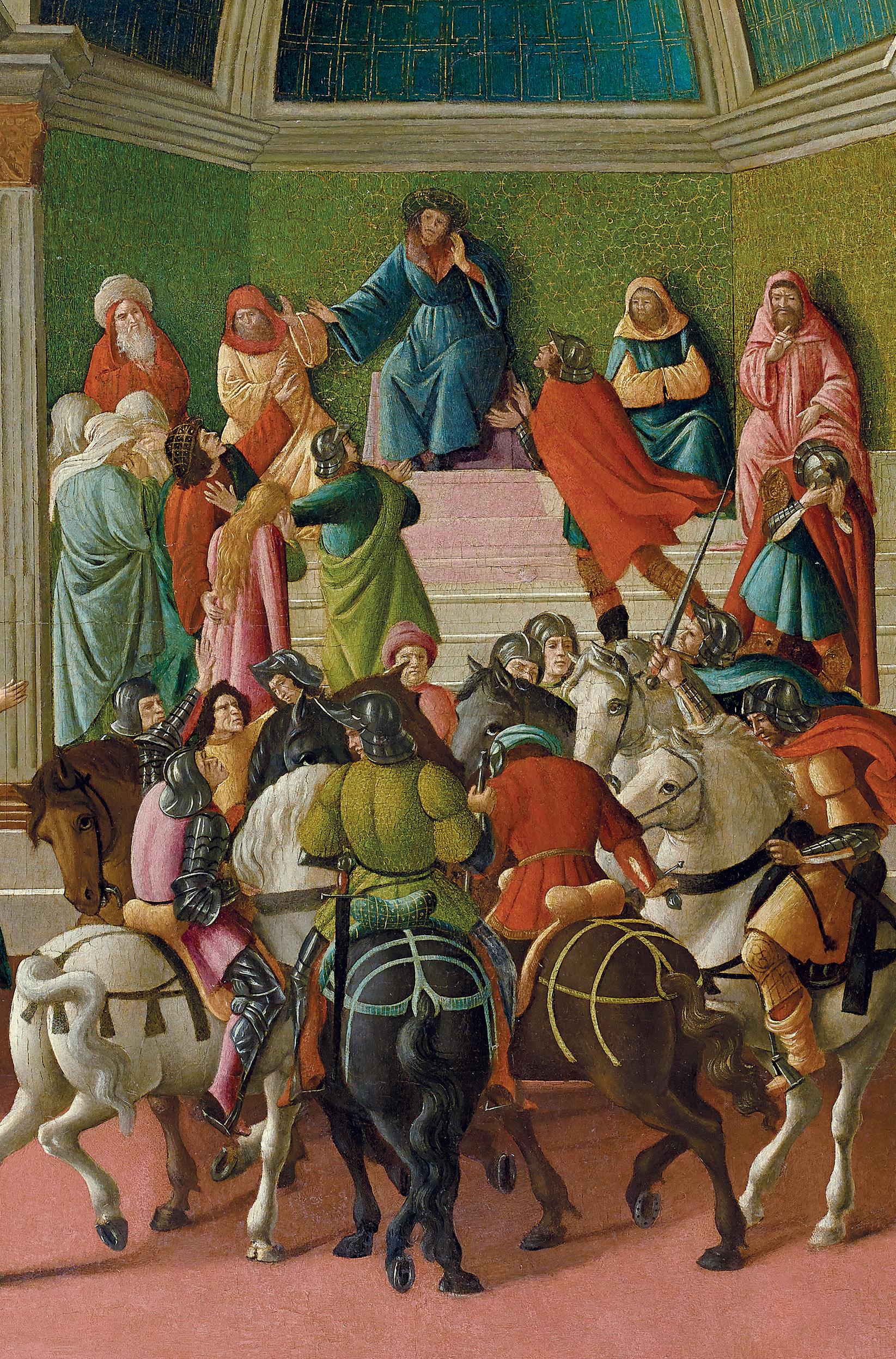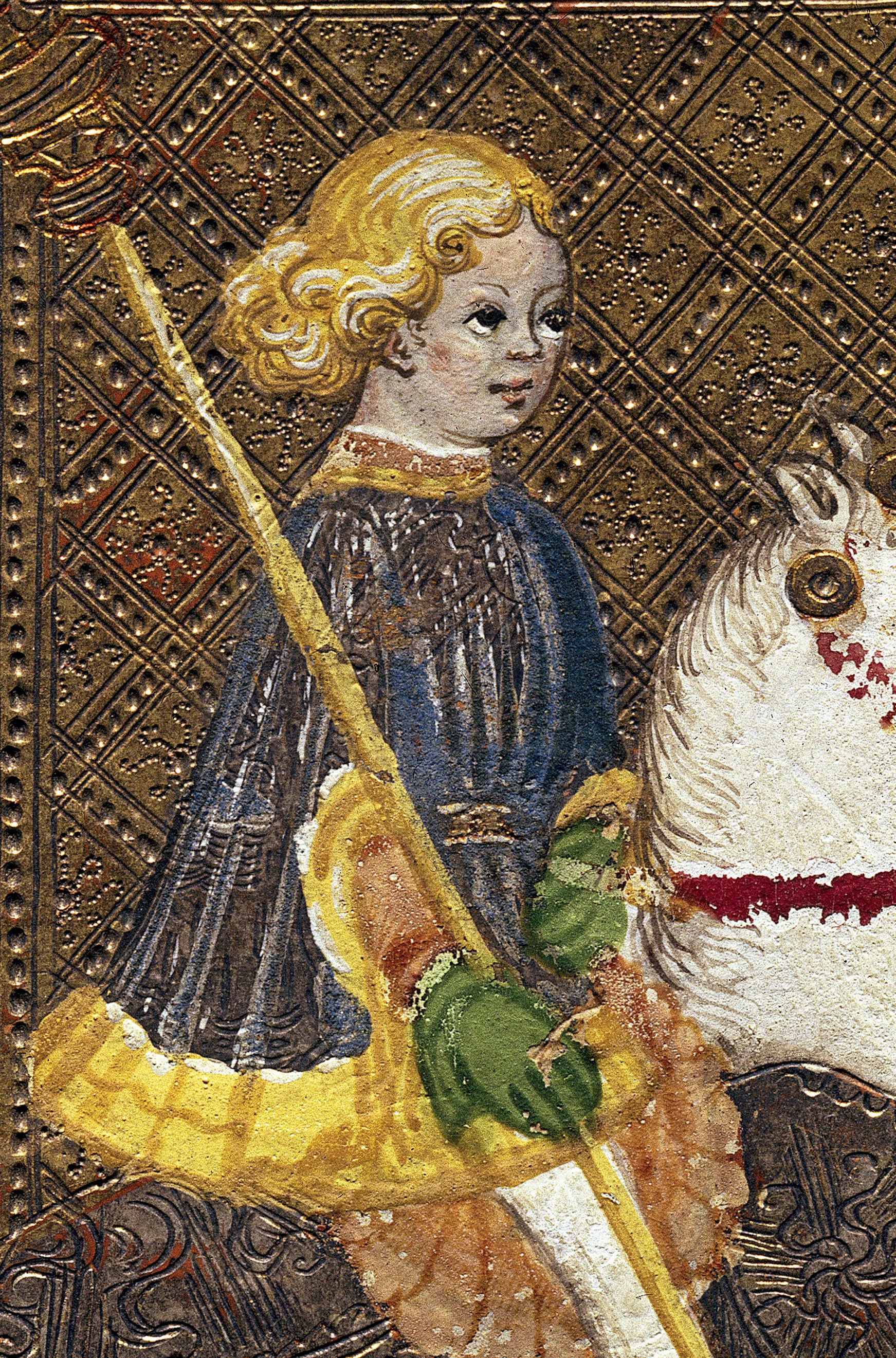
9 minute read
The Renaissance in Central Italy and Flanders
Rooms
4
Advertisement
5
The Renaissance in Central Italy
Between Tuscany and Flanders Tarot
During the fifteenth century, the cities of Central Italy were distinguished by their thriving artistic production. Florence boasted a glorious figurative tradition and was cautious in its acceptance of the sophisticated, aristocratic language of the final splendid Gothic blaze. With the rise of the Medici family at the beginning of the fifteenth century, there began an extraordinary period of renewal, and the city became the powerhouse of Renaissance innovations. An intensely luminous style of painting, in which space was constructed geometrically through the rules of perspective, and the colours became crisp and bright, took hold. New subjects and iconography drawn from mythology and ancient history enriched artists’ repertoires. The zenith of this exciting period were the years of Lorenzo the Magnificent, with Sandro Botticelli.
Renaissance forms and themes burst onto the scene in Siena as well, but in this proud Tuscan city the link with the Gothic tradition and the taste for precious materials and sophisticated linear rhythms persisted. In the Marches, the court of Montefeltro of Urbino was to the fore in figurative research; Piero della Francesca worked here for some time, and it was a privileged locus for engagement between Italian painting and art from north of the Alps. In Umbria, a region of cultural exchange between different locations in Central Italy, Raphael emerged from the workshop of Perugino.
In the fifteenth century, Flanders and the Netherlands developed a great school of painting as well, the chief centres of which were the flourishing mercantile cities of Bruges and Ghent, Antwerp and Brussels. Extraneous to the fascination for classical antiquity that seduced many Italian artists, Flemish painters concentrated on achieving a faithful representation of reality. Thanks to the use of the new oil painting technique, they proved capable of previously unseen optic subtleties and a meticulous realism, but they also developed a modern sacred iconography to meet the needs of a new and structured bourgeois society.
c. 1440 - 1445 tempera and gold on panel 34.7 × 29.5 cm Guglielmo Lochis Collection, 1866
Florence 1420/1421 - Pistoia 1497
Benozzo Gozzoli (Benozzo di Lese) Madonna and Child with Angels (Madonna of Humility)
Benozzo Gozzoli worked in Florence and in various other places around Central Italy, distinguishing himself above all as a fresco painter. The painting belongs to the artist’s youthful phase, and is still influenced by the precious style of his master Beato Angelico. The iconography is that of the Madonna of Humility, fairly widespread in fourteenth- and fifteenthcentury painting. Sitting on a cushion, Mary is holding the Child tight, and he responds to his mother’s affectionate gaze with a caress. Sitting on a marble floor at the feet of the Virgin are two musician angels, while behind her two angels are holding a piece of brocade fabric worked with gold thread. In the background a garden of lilies and roses alludes to the motif of the hortus conclusus, the medieval walled garden symbolizing Mary’s virginity.
c. 1470 - 1475 tempera and gold on panel 58.2 × 43.5 cm Giovanni Morelli Collection, 1891

Siena 1447 - before 1500
Neroccio di Bartolomeo de’ Landi Madonna and Child
A pupil of Vecchietta in Siena and active for many years alongside Francesco di Giorgio Martini, Neroccio de’ Landi was a skilful wood sculptor and a fine painter. The Madonna and Child is a fine example of this artist’s output and an image of rarefied beauty. Mary’s hand is delicately brushing against that of Jesus, whose gaze is directed towards his mother, while his reddened cheeks indicate the emotion of their embrace. The work remains true to the Sienese Gothic tradition, with its taste for gold, sinuous design and subtle layers of colour. But coexisting alongside it is the reworking of some innovations from the Florentine Renaissance. The athletic stance and classical-style anatomy of the Child derive from Donatello, as does the taste for realistic detail: the shadow cast by the Child and the brackets supporting the stone slabs of the parapet.
c. 1475 - 1480 tempera and gold on panel 52 × 39 cm Giovanni Morelli Collection, 1891

Florence 1446 - 1498
Francesco Botticini Tobias and the Archangel Raphael
The depicted episode comes from the Book of Tobit, in the Old Testament, which tells the story of a Jewish man named Tobit and his son Tobias, in exile in Nineveh. The painting show Tobias, accompanied by the Archangel Raphael, as they are travelling to Ecbatana, the ancient capital of Media. The young man is holding the miraculous fish caught in the river Tigris, which will enable him to defeat the demon Asmodeus and to marry Sarah, his beloved, and also to heal his father Tobit from blindness. In Florence the story of Tobias was particularly popular among merchants and travellers, and Botticini, who was a member of the Compagnia dell’Arcangelo Raffaele, based in Santo Spirito, produced various versions of it, including this one for private devotion. By virtue of the fluidity of the drawing and the dreamy expression of the faces, the painting can be dated to the years in which the artist was most influenced by the painting of Sandro Botticelli, who studied alongside him in the workshop of Verrocchio.


c. 1499 - 1500 tempera, oil and gold on panel 83.5 × 162 cm Giovanni Morelli Collection, 1891

Florence 1445 - 1510
Sandro Botticelli (Alessandro di Mariano Filipepi) The Story of Virginia the Roman
In the Florence of the second half of the fifteenth century, Botticelli embodied the highly refined atmosphere of the Medici circles around Lorenzo the Magnificent, and the interest in themes from antiquity. The Carrara painting was executed in the artist’s final period. Originally it served as a backrest, set inside wood or leather cladding covering the walls of a private space. It depicts an episode from Roman history narrated by Livy. Botticelli chose to juxtapose the different moments of the story, which celebrates the female virtues of honour and chastity defended at the cost of life. The decemvir Appius Claudius, enamoured of the young Virginia, already promised to the tribune Lucius Icilius, instructs Marcus Claudius to abduct her, and to make out that she was a runaway slave of his. Defended by onlookers, Virginia is led before the court, presided over by Appius himself, who declares her to be the slave of Marcus. The father, Lucius Verginius, strikes her dead to prevent her honour being stained. The narrative ends with the relatives’ pain and the expulsion of the decemvirs from Rome.
c. 1502 - 1503 tempera and oil on panel 45.5 × 36 cm Guglielmo Lochis Collection, 1866

Urbino 1483 - Rome 1520
Raphael (Raffaello Sanzio) Saint Sebastian
Born in Urbino and initially active in the workshop of Perugino, Raphael worked in Siena, perhaps as an assistant to Pintoricchio, before becoming fully established in Florence in the first years of the sixteenth century. The Saint Sebastian was painted when Raphael was not yet twenty, but it stands out for its extraordinary technical finesse and an almost miraculous rendering of the gradations of light, which envelop the figure in a soft, dreamlike atmosphere. The work was realized for the private devotions of a sophisticated client, which explains why a saint like Sebastian, generally associated with popular piety, is depicted by the artist in aristocratic dress, holding in his hand an arrow to symbolize martyrdom, instead of naked and pierced by arrows, as envisaged by traditional iconography.

c. 1405 tempera and gold on panel 33 × 23 cm Giovanni Morelli Collection, 1891

Florence, documented from 1391 to 1422
Lorenzo Monaco (Piero di Giovanni) Vir Dolorum (Pietà)
Lorenzo Monaco, a monk in the convent of Santa Maria degli Angeli, was one of the leading exponents of the Late Gothic style in early fifteenth-century Florence. The refined language that flourished in courts across Europe was developed by the artist in a devotional sense, in formulas of abstract elegance. The Carrara panel depicts the popular theme of the Pietà. The Dead Christ protrudes from the tomb, his head reclining and hands crossed on his bust, while the Cross is rising up in the background. The image has a radical simplicity of composition and still draws inspiration from late thirteenth-century iconographic models. This deliberate archaism can be seen above all in the simplified design of the anatomic features and of the face, in the calligraphic execution of the hair, stressing the highly devotional nature of the painting.
1480 - 1485 oil on panel 40.2 × 33 cm Giacomo Carrara Collection, 1796

Bruges, second half of the fifteenth century
Master of the Legend of Saint Ursula Portrait of a Young Man
The portrait is attributed to an anonymous painter active in Bruges in the final decades of the fifteenth century, and conventionally known as the Master of the Legend of Saint Ursula. The most important work by this artist is in fact a large polyptych depicting stories from the life of the saint, held in the Groeningemuseum in Bruges. The young man is represented in a half-figure pose, with the head turned three quarters, in front of dark velvet hangings. Opening up behind him is a landscape with a city overlooking a stretch of water and animated by slender knight figures. The painting’s general compositional structure and the analytic realism of the details of the face and landscape are inspired by the works of Hans Memling, a fine artist of German origin who had a flourishing workshop in Bruges.

c. 1455 - 1460; c. 1485 - 1490 tempera on paper with silver and gold 17.6 × 8.7 cm (each card) gift of Francesco Baglioni, 1900
Cremona, documented from 1444 to 1477
Cremona, documented from 1450 to 1482
Cremona, documented from 1480 to 1516
Bonifacio Bembo and Ambrogio Bembo; Antonio Cicognara Twenty-six Playing Cards and Tarot
Tarot cards are playing cards of uncertain origin, but very popular in the courts of Northern Italy during the fifteenth century. A deck consists of fifty-six cards divided into four suits (pentacles, cups, swords and wands), and twenty-two illustrated cards with human and animal figures that have symbolic meanings, formerly called “Trumps”. The Colleoni-Baglioni deck, now divided between the Accademia Carrara, the Pierpont Morgan Library in New York and a private collection, is one of the most complete to come down to us. The client was probably Francesco Sforza, the Duke of Milan from 1450 to 1466. The deck was primarily created by Bonifacio Bembo, one of the leading exponents of the Late Gothic in Lombardy, perhaps with the help of his brother Ambrogio, while Antonio Cicognara produced three cards at a later date to replace ones that may have been lost or damaged.





